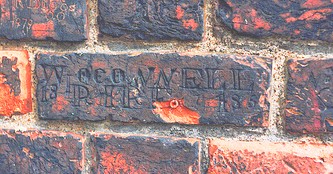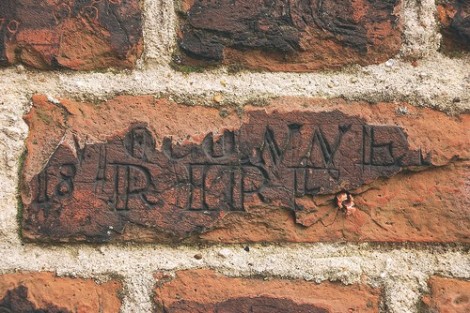This is to be a journey in more ways than one … and I hope you will discover something of interest along the way.
In fact you may find yourself wondering about a similar project of your own.
The gestation period for this project has been extensive just to arrive at the point of getting something down for others to examine. It is open-ended, which gives me the excuse to follow others at the same time as adding information to this one.
Therefore my aim is to get people to enthuse over what I am about to divulge and get a ball of enthusiasm rolling through the local community, gathering more and more desire for more and more information. I also hope to be able to supply that information in words and photographs that will follow.
Before I get too far ahead I must remember to thank the staff of the Chatham Historic Dockyard Trust for allowing me access to the sites involved in this collection, and for those colleagues and fellow members of the Medway Towns Flickr Group for taking such great photographs of … BRICKS!
BRICKS?
Yes, this project is brick-based. Not just any old bricks, although they are old bricks, but bricks that were used to build the iconic buildings that make up the old Chatham Dockyard. These bricks have become an important part of our local social history and deserve to be recognised as such.
… and so the journey is about to begin and, as a final observation, you may find the odd mistake. Although I am trying to fully research the information as I put it down … any errors are likely to be mine.
So, what am I talking about?
The Writings on the Walls is my ‘dream project’ which began in 1985 when the Chatham Historic Dockyard opened its gates to the general public after John Nott and Mrs Thatcher announced its closure in 1981. There was a short reprieve so that the ships sailing to the Falkland Islands would have some sort of back-up in an emergency.
I was an Electrical Fitter apprentice (1952 entry) and was soon aware that the buildings at the ‘top-end’ of the yard carried a unique social document on their outer walls in the form of architectural graffiti, i.e. names, regimental details, drawings etc., lovingly scratched into the brickwork. I suspected that the information contained there could be very interesting and was anxious at the re-opening to ensure that these treasures were still in situ.
An introductory letter sent to Sir Steuert Pringle led to a meeting with Richard Holdsworth to discuss a plan of action allowing me access to the buildings to photograph the various bricks.
The buildings involved were
- The Ropery
- The Paint and Lead Mill
- The Warehouses and Stores on the Anchor Wharf, and
- The area around the Pay Office.
… and so began my quest for information about those who stood and engraved their names and messages into the brickwork.
WHY BOTHER?
People have asked me about my interest in this project … surely bricks can look after themselves?!
Here is an example of a brick located on the south wall of the Ropery, one amongst hundreds.
- Was W O’Connell just whiling away some time by scratching his name on the wall?
- Does “18” mean he was eighteen years old?
- What is the meaning of “R IRE or P IPE or F”?
- Is the date relevant to the inscription?
The Chatham area had, and still has, a strong military connection. I researched some possibilities.
I searched for the 18th Regiment of Foot and found that it referred to “The Royal Irish Regiment”.
I wondered if “R IRE” could refer to “The Royal Irish Regiment”, and although this is a tenuous connection I think it is enough to look further. I have traced some details of convoluted history of regimental amalgamations and disbandings … but this is what research is all about. I shall carry on.
The Royal Irish Regiment was, indeed, present in Chatham at that time.
The aim of this article is to answer the question posed earlier. “WHY”?.
The same brick has been photographed by one of the team in 2008 and it now looks like this:-
Before I go too far with the actual details of the graffiti and what I have found through research, I shall reinforce my argument as to why we need to protect even the smallest piece of information concerning establishments like the dockyard.
This board was one of many that were rescued at the last moment from the bonfires of 1984/5. They now reside in the Dockyard Museum and can be seen in all their glory.
These artifacts were lucky to survive.
They must be treasured.



Success!! Well done Brian. Keep at it.
well done bri an excellent site and great information i know how much time and effort you have spent on this project and i am glad its all coming together
well done bri
I have quite a lump in my throat reading this for the first time as I know how long this project has been important to you . Thanks to your passion, and supported by modern technology, so many more people can now share this important historical information and the lives of some of the people behind it .
Absolutely brilliant Brian! Well done and do keep at it!
I found it incredibly interesting!
Great work and definately a project worth doing.
Cheers Brian. I’m trying to write a lot of my own stuff and not too much from previous books. I hope it makes it interesting. (Although the descriptions of building are only really available from existing sources!)
However I’m getting used to adding bits and pieces now so do come back … please!
GREAT JOB BRIAN
SO MUCH HISTORY THAT MOST PEOPLE WOULD NEVER REALISE WAS THERE EVEN IF THEY WALKED PASSED IT
GLAD TO BE PART OF THIS GREAT PROJECT
Brian — It was so nice to meet you today in the Museum of the Royal Dockyard in the Historic Dockyard, Chatham. We chatted about your facinating project and about your interest in the Dockyard Historical Society.
I will add a link on http://www.cdhs.org.uk (Links page) through to your own Writings on the Walls blog/website.
All power to your elbow!!
Regards,
Clive
A window on the story that Chatham has to tell.
This is an example of the passion that many local people have for their history, one that I hope will increase as our bid for World Heritage status progresses.
Well done with the website, Brian and good luck
Lindsey
This comment marks the end of the first year of this project. By that I mean the end of the first year actually putting something together in a form which can be said to be the beginning of something special, to me at least.
I would like to thank everyone and anyone who has helped in any way and although I feel I should name names I am not going to because I shall leave someone out, inevitably, and I don’t want to do that. But I must thank members of the ‘Writings on the Wall’ Flickr group for taking so many wonderful photographs and are still waiting to see some of them on the site! (Don’t worry … they will appear as I get through the research stage) as well as the helpful members of the Chatham Historic Dockyard Trust and, more recently, the Royal Dockyard Historical Society.
A heartfelt thanks to you all and I hope you are patient enough to see this project grow.
Like everyone else I found this brilliant and knowing you as |I do I would expect nothing less.
Thanks Pat for your very kind remarks. Hope you found ALL of the articles OK!
Just checking on your current progress. It’s surprising to see the deterioration since we were there together …. but alas, time does pass.
Keep up the good work.
Thank you Brian. It’s nice to know that the Dockyard is remembered in YK.
I shall be in touch with all the news … well, as much as I can remember, if you know what I mean.
Brian.
Wonderful work, and truly fascinating reading. I am honoured to be part of this project, and like many many others would have just walked past all that amazing history around us, had you not pointed it out to me.
By doing this, and continuing your dream, you are safeguarding our important history for all future generations, and for this you should be very proud of yourself.
Keep up the great work.
Garry.
Garry. Nice to receive your comment … much appreciated.
What a fantasic piece of history, I am so pleased that you have bought this to us, it is something i will be looking out for in future, many thanks for a great site.
Very interesting and a fantastic project …. more please!
Several of my ancestors worked at the Dockyard (Chatham and Gillingham) and my grandfather was an apprentice blacksmith and went on to become a farrier. My great-grandfather was a sawyer. I found your reports very interesting. I did volunteer work in the small museum a few years’ ago and noticed the carvings in the wall. On the Roll of Honour board is the name of my great-uncle James Shrubb, who must have worked there but he is not found on the Commonwealth Graves Commission website. Six of my uncles worked at the dockyard but I’ve never found any bricks with their names on! My husband was an electrical apprentice there after leaving school. It would be about the same time you were an apprentice, he was born in 1938, he left school at 16, so perhaps a bit younger than you. He was managed by Henry – and a Mr. Rosier. His name was Cecil (known as Ces) Halliday.
Thank you again for your interesting history lesson.
S.H.
I shall contact you by email soon Sheila about some of the detail in your comment. Please bear with me as we are getting quite a lot of interest now. Brian
Hi Brian,
I’m looking forward to a catchup over coffee but in the meantime I’ve just spotted the History Hackday at the Guardian in January, thought you might like to know about it:
http://historyhackday.org/
Positive thoughts,
Carl @FellowCreative
Cheers Carl,
I hope you find the various messages from me to you as I am anxious to get this “show on the road”
I’m loving “Information is Beautiful” (McCandless) as it seems to reinforce all we spoke about at Poco Loco.
Brian